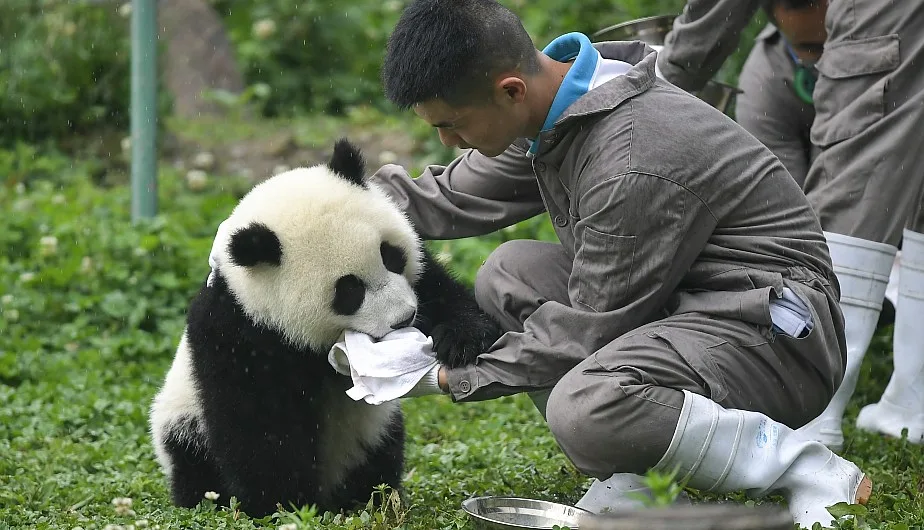Are Pandas Friendly to Humans?
Whether or not the panda is friendly to humans is a question that you may be wondering. You’ve probably seen pictures of the tiniest of animals in the zoo or in a park, and you’ve probably wondered whether they really enjoy interacting with people.
Giant pandas are solitary animals
Unlike other animals, giant pandas are solitary animals and friendly to humans. They prefer to live alone and are able to communicate through scent markings. The scent marks allow them to locate other pandas in their area. This helps them divide their territory.
Giant pandas are very nimble tree climbers. They are also very strong swimmers. They have strong jaws and adapted teeth to slice tough plant stems. They can crush bamboo up to 1.6 inches in diameter. They eat twenty to forty pounds of bamboo per day.
They have a highly developed sense of smell. They use urine and scent markings to locate each other. They also mark their territory by rubbing the secretions from anal glands on surfaces. These markings help them locate each other during mating season.
Their range extends throughout southern China. They are also found in Vietnam. Unlike other species, giant pandas do not hibernate. They sleep in the daytime and feed during the night.
Pandas eat bamboo
Besides grazing on bamboo, pandas are also known for their elongated wrist bone, which makes them better able to grasp their food. They can also crush bamboo with their flat back teeth.
Pandas are omnivores and eat a variety of plants, including bamboo, fruits, seeds, and insects. They also occasionally eat small rodents, fish, and birds.
Pandas eat around 13 kilograms of bamboo a day. It is a good source of protein. They extract about half of their calories from protein, and about 40 percent from fat. They also eat more calories from fat than from carbs.
Although pandas are not vegetarians, they have no protozoans to break down cellulose. This makes bamboo their “fake meat”. Pandas have a great digestive system to break down plants, but not a lot of gut flora to help digest cellulose.
Unlike cows, pandas have a very simple stomach. Their digestive system is a single-chambered stoma, unlike cows, which have multi-chambered stomachs.
Giant pandas give birth to twins in about half of pregnancies
Despite being one of the smallest mammals, giant pandas are capable of raising twins. However, this feat is not commonly seen in the wild. In fact, only two females have been documented to raise two cubs simultaneously.
In the wild, a panda cub will live with its mother for a year or more before settling in their own territory. After that, a second cub will be born, and this one will spend most of its time with its mother. This will likely be a non-adaptive trait from the ursid species, but it may be a good insurance policy should one of the cubs die.
Despite their small size, giant pandas do have a large amount of energy. Their average daily energy expenditure is 3,500 kcal. This is more than half of what a human consumes.
The panda population in Sichuan province has been stable at about 1,500 animals for years, but there are tentative signs that it may be increasing. In the late 20th century, the number of pandas in the wild dropped off dramatically, but conservation funding and protection of habitat has helped turn the tide.
Can you give a panda a hug?
Historically, pandas were hunted for meat. These animals were often described as cute and lazy, but they aren’t as docile as they seem. They are capable of delivering strong bites and can be dangerous to humans if threatened.
There are only about 1,600 giant pandas left in the wild. The Chinese government owns the majority of these animals, but they are also protected in captivity.
They are not aggressive by nature, but they may attack humans out of frustration or irritation. Their bite pressure is 292 pounds, which is the highest among living carnivores.
They are also quite clumsy. Pandas love to fall, but they don’t get hurt when they do. They also like to roll around and tumble. Interestingly, they’ll sometimes cover themselves in horse manure to protect themselves from cold temperatures.
They can chew on a variety of items, including leaves, bamboo shoots, the flesh of birds, and the flesh of dead animals. They can also digest small amounts of meat.
